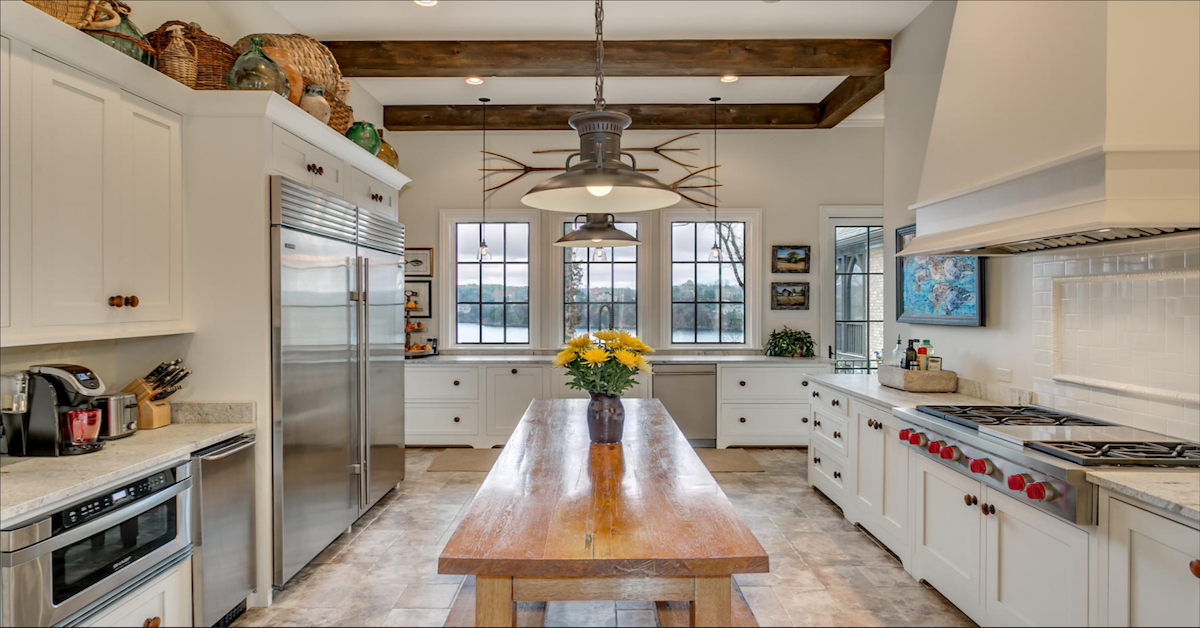What Features Make a Kitchen More Accessible for All Ages?
A kitchen should be more than stylish — it should be functional for everyone who uses it, regardless of age or mobility. Whether you're designing for aging parents, young children, or planning for your own future comfort, an accessible kitchen brings ease, safety, and independence into the heart of your home. Let’s break down the most helpful features to consider when creating a kitchen that works for all ages and abilities.

Lower Countertops and Workspaces
One of the most practical changes you can make is adjusting counter height. Lowering part of your kitchen counter or island makes it easier for people in wheelchairs or children to participate in cooking or snacking. A height of around 30 to 34 inches for at least one section of counter can create a more inclusive space without sacrificing flow or aesthetics.
Pull-Out Shelves and Drawers Instead of Deep Cabinets
Traditional lower cabinets often require bending or kneeling to access what's in the back. Pull-out shelves or drawers solve that problem by making every inch easy to reach. Whether it's pots and pans, pantry items, or cleaning supplies, these sliding features improve convenience for people with limited mobility or even just tired knees.
Touchless and Easy-Grip Hardware
Small upgrades to hardware make a big difference. Lever-style handles are easier to use than round knobs for people with arthritis or grip strength issues. Touchless faucets are a great addition too — they allow users to turn on water with a wave of the hand, keeping things clean and making kitchen tasks less demanding.
Task Lighting That’s Easy on the Eyes
Proper lighting is essential, especially for older adults who may have vision changes. Install bright, even lighting under cabinets and above key work areas to make chopping, reading labels, or cleaning easier. Avoid harsh shadows or overly dim corners that can cause accidents or strain. Adjustable brightness or dimmer switches are an added bonus.
Accessible Appliances
Modern appliances come with great accessibility features. Wall-mounted ovens at a reachable height eliminate the need to bend down. Side-by-side refrigerators are easier to open and organize. Dishwashers with drawers or top-loading microwaves are also helpful. Consider appliances with large buttons, clear digital displays, and easy-to-turn knobs for enhanced usability.
Non-Slip Flooring for Safety
The floor plays a huge role in how safe your kitchen is. Smooth, non-slip surfaces like textured vinyl or rubber-backed tile help prevent falls — one of the biggest concerns for both older adults and active kids. Avoid rugs that can bunch up or slide unless they’re secured properly.
Wide Walkways and Open Layout
If you’re redesigning the entire kitchen, plan for walkways that are at least 36 inches wide. This allows room for wheelchairs, walkers, or even just two people moving comfortably through the space at the same time. An open layout also creates a more social atmosphere and lets everyone feel included.
Accessible Sinks and Cooktops
A shallow sink with clearance underneath allows wheelchair users to roll up and use it with ease. Likewise, a cooktop with front-facing controls and no rear burners prevents the need to reach over hot surfaces. These small design choices greatly increase comfort and reduce the risk of injury.
Smart Storage for Everyday Items
Store commonly used items — plates, cups, utensils — at arm’s reach to avoid unnecessary bending or stretching. Lazy Susans in corner cabinets, pull-down shelves in upper cabinets, and adjustable pantry units can make your kitchen more functional for everyone. Think in terms of ease and visibility.
Seating for Rest and Socializing
Whether it’s a bench by the window, a stool at the island, or a comfy chair nearby, having a place to sit gives people a chance to rest while staying engaged in kitchen activities. For multi-generational households or anyone with limited stamina, this is a simple feature with a big impact.
Conclusion
An accessible kitchen isn’t just about compliance or checklists — it’s about creating a space where everyone feels welcome and able to contribute. By focusing on thoughtful design choices, you can make your kitchen safer, more comfortable, and more enjoyable for every member of your household.
At Kitchen Discounters, we believe your kitchen should adapt to your life, not the other way around. We specialize in practical, stylish solutions that make cooking spaces easier to navigate for all ages and needs. Let our team help you design a kitchen that works beautifully today and continues to serve you well into the future.

